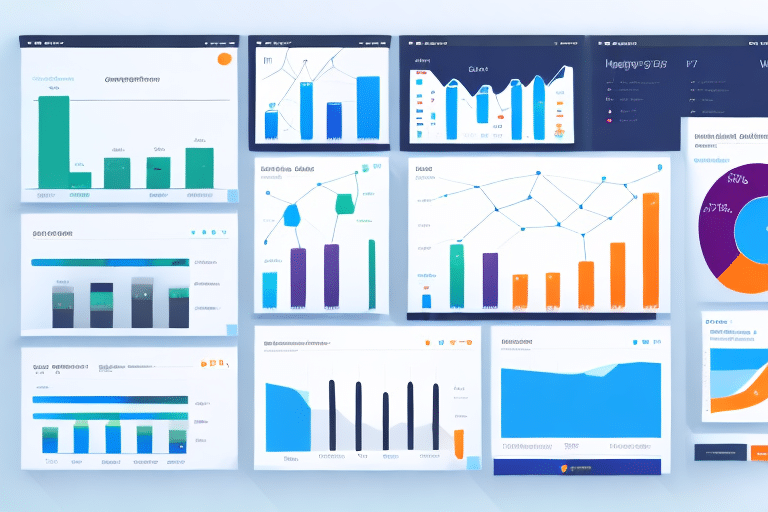The Benefits and Impact of Free Shipping on Ecommerce
Offering free shipping is a powerful strategy for ecommerce businesses aiming to enhance customer experience and differentiate themselves in a competitive market. Here are the key benefits and impacts:
Increased Website Traffic and Sales
Free shipping can attract more visitors to your website, leading to higher sales volumes. According to a Shopify study, free shipping is one of the top factors influencing online purchase decisions.
Enhanced Customer Experience and Loyalty
By eliminating shipping costs, businesses can create a more seamless and satisfying shopping experience. This fosters goodwill, leading to increased customer loyalty and repeat purchases.
Reduced Cart Abandonment Rates
Unexpected shipping costs are a common reason for cart abandonment. Offering free shipping simplifies the checkout process, thereby reducing the likelihood of customers abandoning their carts. For more insights, refer to this BigCommerce report.
Competitive Advantage
In a crowded marketplace, free shipping can be the deciding factor that sets your business apart from competitors. It can also help in expanding your customer base by making your products more accessible to a wider audience.
The Costs and Considerations of Offering Free Shipping
Understanding the True Cost
While free shipping is attractive to customers, it’s important to recognize that it comes with costs. These include shipping fees, packaging, handling, and potential delays in delivery times.
Calculating Profit Margins
Businesses must carefully evaluate how offering free shipping affects their profit margins. Implementing strategies such as setting a minimum order value can help offset these costs by encouraging larger purchases.
Negotiating with Carriers
To manage shipping costs effectively, businesses can negotiate better rates with carriers or partner with third-party logistics providers. This can lead to reduced shipping expenses without compromising on service quality.
Alternatives to Free Shipping in Ecommerce Pricing Strategies
Flat Rate Shipping
Charging a fixed shipping rate regardless of the order size or weight can simplify the shipping process for both the business and the customer.
Minimum Order Threshold
Offering free shipping for orders that exceed a certain amount encourages customers to add more items to their cart, increasing the average order value.
Tiered Shipping Rates
Implementing tiered shipping rates based on order size, weight, or destination can provide flexibility while still offering value to customers.
Carrier Calculated Shipping
This approach involves calculating shipping costs based on real-time data from carriers, ensuring accurate and fair pricing for both the business and the customer.
Implementing a Balanced Free Shipping Strategy
Setting Minimum Order Values
One effective way to offer free shipping without significantly impacting profit margins is to set a minimum order value. This encourages customers to purchase more items, offsetting the cost of shipping.
Selective Free Shipping
Offering free shipping selectively, such as for high-margin products or loyal customers, can help manage costs while still providing value.
Optimizing Product Pricing
Adjusting product prices to include shipping costs can help maintain profitability while offering free shipping to customers.
Case Studies: Brands Successfully Implementing Free Shipping
Warby Parker
Warby Parker offers free shipping on all orders and provides a prepaid return label, enhancing customer trust and convenience. This strategy contributed to a reported 50% increase in sales.
Amazon
Amazon Prime’s free shipping benefit has been a cornerstone of its success, driving customer loyalty and increasing the frequency of purchases.
Zappos
Zappos leverages free shipping and a generous return policy to create a superior customer experience, resulting in high customer satisfaction and repeat business.
The Future of Ecommerce Shipping and Pricing Strategies
Dynamic Pricing
Dynamic pricing involves adjusting prices in real-time based on demand, competition, and inventory levels. This strategy helps businesses remain competitive and maximize profits.
Subscription-Based Models
Subscription services that include free shipping can provide a steady revenue stream and increase customer loyalty. This model is particularly effective for consumable products like beauty items or meal kits.
Same-Day and Eco-Friendly Shipping
As customer expectations evolve, offering same-day delivery and environmentally-friendly shipping options can enhance the shopping experience and appeal to environmentally conscious consumers.
Measuring and Optimizing Your Free Shipping Strategy
Key Metrics to Track
- Conversion Rates: Monitor how free shipping affects the number of visitors who make a purchase.
- Average Order Value: Track changes in the average amount customers spend per order.
- Customer Acquisition Cost: Assess how free shipping influences the cost of acquiring new customers.
- Customer Lifetime Value: Measure the long-term value of customers attracted by free shipping.
- Shipping Costs: Keep a close eye on the expenses associated with providing free shipping.
Optimization Strategies
Use the data collected to refine your free shipping strategy. This may involve adjusting minimum order values, renegotiating shipping rates, or targeting specific customer segments to maximize profitability.
Creative and Marketing Strategies for Free Shipping
Bundled Products and Partnerships
Partnering with complementary businesses to offer bundled products can provide free shipping without significantly increasing costs.
Loyalty Programs
Implementing loyalty programs that reward repeat customers with free shipping incentives can enhance customer retention and satisfaction.
Seasonal and Limited-Time Offers
Offering free shipping during peak seasons or as a limited-time promotion can drive sales without committing to permanent free shipping policies.
Effective Communication
Clearly communicate your free shipping policies on your website and marketing materials. Use persuasive language and visual cues to highlight the benefits and encourage purchases.
Conclusion
Free shipping is a highly effective pricing strategy that can enhance customer experience, increase sales, and drive profitability for ecommerce businesses. However, it requires careful planning and optimization to balance the benefits with the associated costs. By understanding the true cost of free shipping, exploring alternative strategies, implementing balanced approaches, and leveraging creative marketing techniques, businesses can successfully integrate free shipping into their overall pricing strategy. Additionally, staying abreast of future trends and continuously measuring the impact of your strategy will ensure sustained success in the dynamic ecommerce landscape.






















